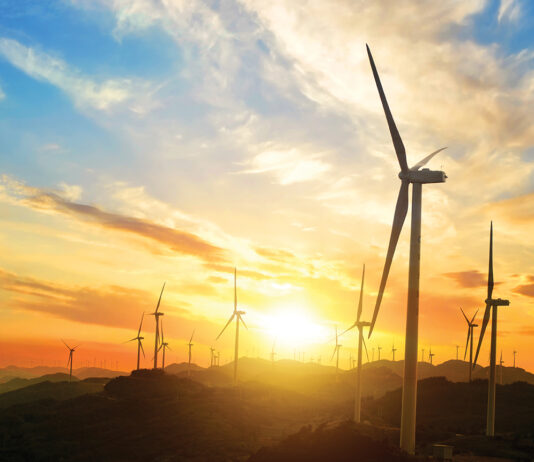
The United States’ power grid system has been repeatedly criticized for being outdated and unable to keep up with the contemporary environment and modern energy demands. As the U.S. undergoes a green transition, the need to connect the grid to a multitude of renewable energy projects is also a major concern. In addition, climate change is contributing to more frequent extreme weather events. This hits the electric system hard, often causing destruction and blackouts. The main problem is that the power grid was never planned out to deal with the contemporary energy structure of the U.S. But now, with the promise of major new public infrastructure investments, the government must work with the energy industry to reimagine the country’s electrical structure and plan for the future.
How Is The U.S. Power Grid System Run?
The U.S. power grid is as expansive as they come. Power lines cover hundreds of thousands of miles and connect thousands of electric generators with households and businesses. However, much of the system is highly fragmented. The individual states manage much of their grid power alone. There is little coordination with neighboring states or federal oversight.
The U.S. electric grid comprises the Eastern, Western, and ERCOT interconnections — three separate power grids isolated from each other. And the high-voltage, long-distance electric transmission lines delivering energy are still more isolated. The U.S. mainland has 12 different transmission planning regions, which all fall under federal jurisdiction, except the Electric Reliability Council of Texas (ERCOT). But these systems also fall under different regional management, making them highly uncoordinated.
Essentially, the U.S. grid was not comprehensively planned out to be run across such a vast amount of land. Now, the grid has to keep up with different environments and rules to provide power to a population of over 331.9 million. Executive Director of NextEra Energy Transmission, Aaron Bloom, explained “The United States is the only macro grid in the world that doesn’t have a plan of any type.” And while major geographical areas, such as the EU and China, have plans for grid development, the U.S. has failed to establish a comprehensive strategy to adapt and modernize its grid.
To Continue to Grow in the Green Transition, It’s Imperative We Update the Grid
Strengthening the grid could help reduce disruptions by malicious actors, decrease power outages, and help lower energy bills by transitioning to cheaper, cleaner electricity. But to confront the challenges of today, any updates to the grid would have to prepare for disruptions from hackers, foreign actors, and natural disasters. Doing this would require major investments in research and development toward optimized power delivery and enhanced resilience. The Department of Energy (DoE) also highlights the need to implement new interactive capabilities to allow the system to respond more easily to change. We need a way to monitor new measurements, data analytics, and models that leverage the latest scientific advancements in mathematics and computation to increase efficiency and reliability.
The DoE notes several ways in which the grid must be improved. First is the development of microgrids to deliver power from renewable energy projects to the local community – many in rural or new energy production areas. These can also boost power delivery if the main grid goes down. The second is encouraging consumers to reduce their electricity demand during peak hours to alleviate pressure on the grid. Third is smart metering, which lets consumers understand and reduce their energy use. Fourth is establishing grid-scale energy storage devices to help utilities to provide more electricity during peak hours. And fifth is the rollout of new grid hardware for carrying, converting, and controlling power.
One key aspect to consider is the constantly changing power sources, as the U.S. undergoes a green transition and many more renewable energy projects are connected to the grid. The construction of a new grid would have to consider the constantly evolving state of American energy, with several new green energy operations from a variety of sources coming online every year. While this is something complex to consider, the potential for greater decarbonization under a well-thought-out new grid system is substantial.
Key Challenges We Could Face Updating the Electric Grid
Despite all the positive aspects of overhauling the U.S. electric grid, there are still a plethora of challenges. In fact, many experts suggest that a complete transformation is near impossible. One of the biggest hurdles is overcoming regional differences to build a comprehensive national grid system that everyone agrees upon. Gregory Wetstone, CEO of the non-profit American Council on Renewable Energy, stated “The system we have for planning and paying for new transmission does not adequately value or promote the vital benefits of interregional transmission. Transmission planning does not sufficiently take into account the benefits of a holistic system over the long term.”
The lack of a comprehensive plan for the grid in the past has led to the creation of thousands of individual utilities, each responsible for its own region. The regulatory framework has also evolved to serve those utilities, rather than the nation as a whole. Whetstone explained, “Lines crossing multiple states have to receive permits from many local and state agencies, and a single county can block the construction of a new transmission line that would benefit the entire region.”
What Have We Done to Address the Change?
While there is hope for an overhaul, with funding available from Biden’s $1 trillion Bipartisan Infrastructure Bill, a lot of groundwork needs to be laid to get anywhere close to prepared for a total grid reconstruction. The DoE is currently conducting a National Transmission Planning Study to better understand the situation. However, this alone will take a long time to produce results, meaning that if we want the grid to be done well – rather than just patched up once again – we will have to wait for the results of the survey and potentially many more years of planning to find the right solution.

Author Bio
Felicity Bradstock is a freelance writer specializing in Energy and Industry. She has a Master’s in International Development from the University of Birmingham, UK, and is now based in Mexico City.
















